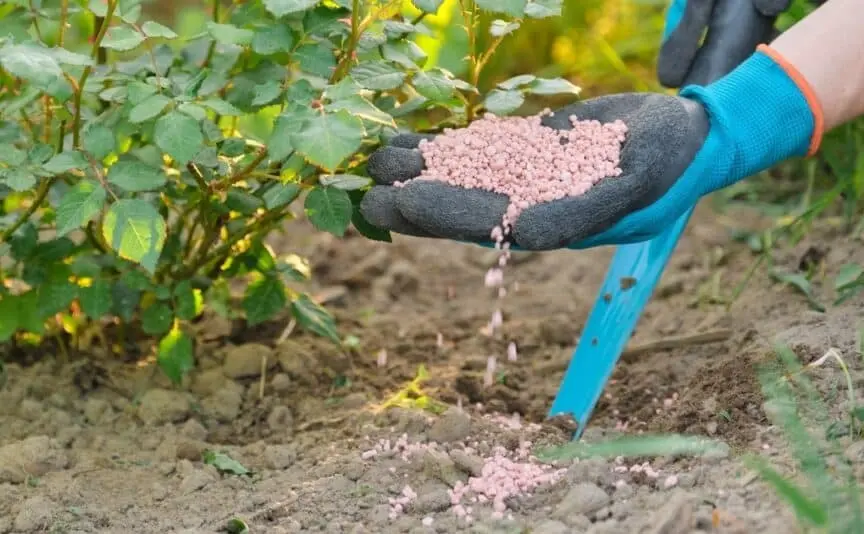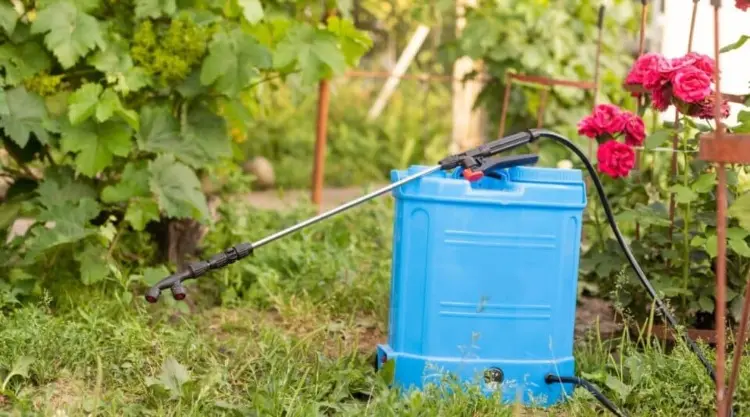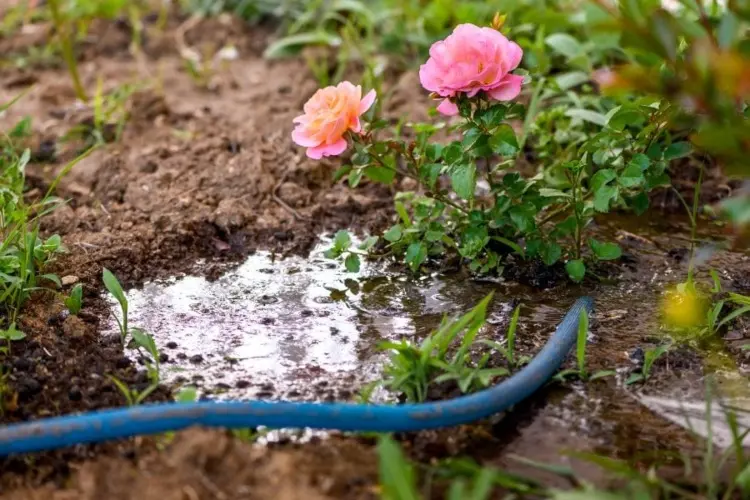The rose is the queen of all flowers. All the more annoying when their glossy, bright green leaves suddenly turn yellow or develop unsightly brown spots. There are several possible reasons why roses are yellowing – and luckily for the majority there is an easy solution.
When roses get yellow leaves: these are the most common causes
Roses are sensitive to mistakes in care, and the wrong location can also have a negative impact on their growth. Certain diseases can also be to blame. We explain how to properly care for the plants and which home remedies help with pests.
Roses have yellow leaves after fertilizing: over-fertilizing

Too much fertilizer can have a particularly negative effect on rose plants. The fertilizer can kill the beneficial bacteria in the soil – this is especially true with chemical fertilizers. Young plants in particular are sensitive to nitrogen fertilizer – their roots can burn and no longer absorb water properly. The plant stops growing and the leaves turn yellow. But natural substances such as coffee grounds can also make the soil impermeable and make it difficult for the nutrients to be absorbed.
What you can do: Do not fertilize young plants at first. Wait for the roses to develop their roots. Fertilize once in late spring, once in July and again in early September. That’s all you should do for gorgeous blooms and healthy foliage.
Yellow rose petals? Chlorosis as a possible cause

The wrong fertilizer can have very negative consequences for rose plants. For example, because it contains large amounts of nutrients that the rose actually does not need. Or because it does not provide the roses with the necessary trace elements. This includes iron. If the rose does not get enough iron, the leaves will turn light yellow. After that, the plant is more susceptible to chlorosis – the flowers can no longer produce chlorophyll and the leaves die off. Other factors such as calcareous soil, thickened soil and improper watering can contribute to iron deficiency.
Rock flour against chlorosis: You can incorporate rock flour into the soil to correct the iron deficiency. However, you should be patient, because the results will only show after a few months.
Green lice on roses result in curled, yellowed leaves and buds

The greater rose aphid reproduces in the spring months and then infests the rose plants in the garden from mid-May to late June. The infestation is first noticeable on the leaves and then on the buds. Yellowed or partially yellowed, curled leaves and dried up buds are the first signs. Ants can sometimes be found on the infested plants – they feed on honeydew, a substance that the aphids excrete. The aphids themselves are small, green and can be found on the underside of leaves.
Home remedies for aphids on roses: Pour 1 tablespoon of soapy water into a 1 liter spray bottle and spray the plants late in the afternoon. The next morning, rinse the plants thoroughly with the garden hose. Repeat this process 2-3 times over the next 10 days.
Roses get yellow leaves and brown spots: fight blackspot

The wrong location can favor a fungal disease. If the roses are in the shade and the leaves remain moist for longer (e.g. because it rains more often, because the plants are watered from above or because the air cannot circulate freely), they can be affected by blackspot. First, many small brown spots can be seen on the leaves. Then the leaves begin to turn yellow, and the spots turn black.
Combat blackspot: Remove the diseased parts of the plant, disinfect the secateurs with denatured alcohol. If there are laurels or oleanders growing nearby, check those plants for signs of the disease as well. Treat the roses with fungicides as soon as possible to keep the fungal spores from spreading throughout the garden. Dose very carefully, because roses are very sensitive to chemicals.
Roses turn yellow leaves: Too much water

Most often this happens with outdoor plants – they are watered incorrectly and the roots become mushy and rot. If the roots are damaged, the plant can no longer absorb the nutrients and dies. You can notice the signs right away: the leaves turn yellow, begin to fall off. The roses are hanging their heads and the ground is wet. Incidentally, roses can also turn yellow if they are not watered enough – but in this case you will notice that their leaf tips turn brown and are very dry.
How often and how much to water roses? Outdoor plants are watered from below. Shrub roses need around 10 liters of water and are watered once a week. Flowers in the flower bed can be watered extensively twice a week. Potted plants have a higher water requirement because the irrigation water evaporates quickly. They can also be watered every morning when it is hot. It is best to do a finger test and only then water the plants.
